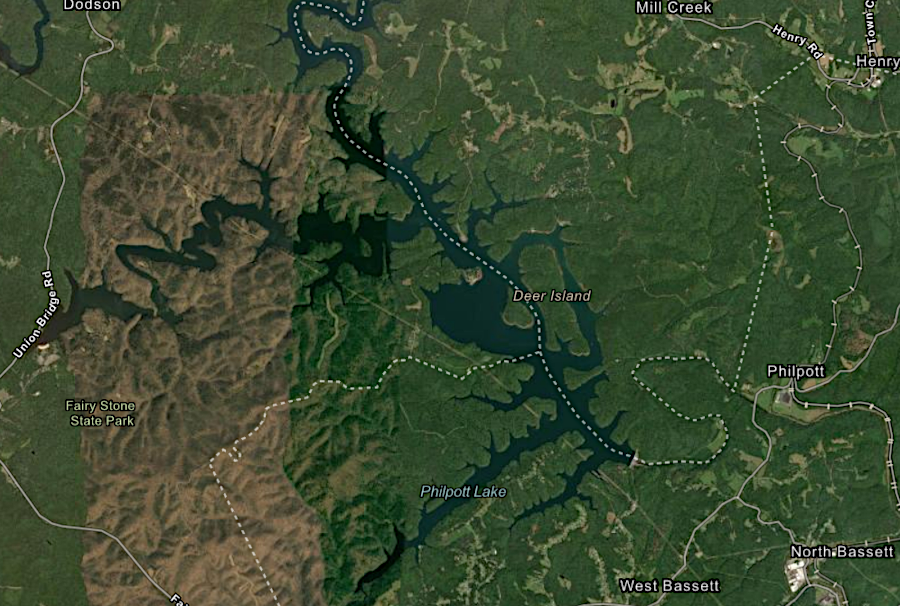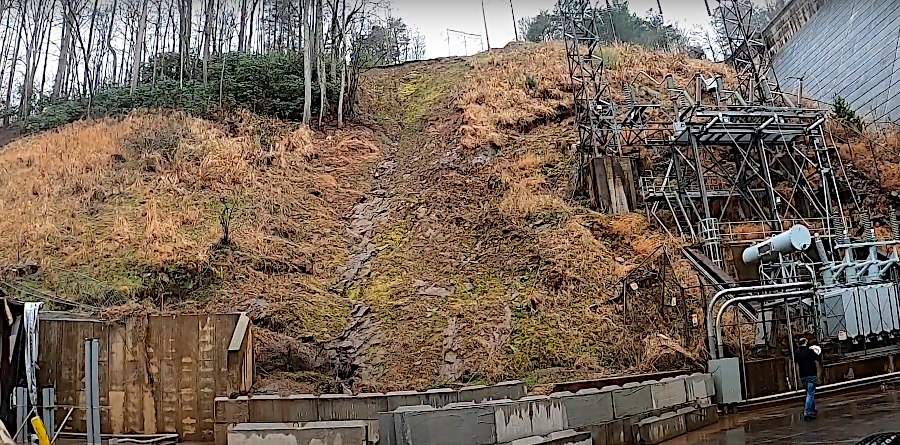
Philpott Lake extends into Henry, Patrick, and Franklin counties
Source: ESRI, ArcGIS Online

Philpott Lake extends into Henry, Patrick, and Franklin counties
Source: ESRI, ArcGIS Online
The US Army Corps of Engineers completed Philpott Dam across the Smith River in 1952, and finished building the powerhouse a year later. Primary objectives were to limit flooding in the Roanoke River basin and to generate electricity. Philpott Dam was authorized in 1944 after damaging floods in 1940, triggered by 14-16 inches of rainfall.
Along with the John H. Kerr, Leesville, Smith Mountain, Gaston, and Roanoke Rapids dams, Philpott Dam also provides recreational opportunities. An update to the Philpott Lake Master Plan in 2022 proposed reclassifying much of the Federal land around the lake as Multiple Resource Management Lands, a designation that prioritized us for low-density recreation and wildlife habitat.1
The lake covers portions of the Tutelo-Saura Path, and the Saura-Saponi Trail used by Native Americans before the arrival of English colonists. Settlers expanded on those paths to go from the valley of the Roanoke River to the Piedmont in North Carolina. The colonist's "Great Road" crossed the Smith River just downstream from Philpott Dam.
By 1905, A.B. Philpott had opened a store where Town's Creek met the Smith River. The site developed when the Virginia Ore & Lumber Company built a standard gauge railroad up the Smith River to haul iron and timber from Fayerdale, which is now in Fairy Stone State Park, to the Norfolk and Western Railway's "Pumpkin Vine" line at Philpott. From Philpott, the Norfolk and Western Railway carried iron ore to furnaces in Pulaski, and that pig iron was used in the Roanoke foundries.2
On May 24, 2020, heavy rainstorms caused water levels to rise enough for water to flow over the spillway for the first time in the dam's history. A landslide just downstream of the dam damaged the powerhouse and other infrastructure so severely that it remained off-line for over two years. Bank stabilization was attempted, but was not fully successful. As reported in the Martinsville Bulletin:3
Source: US Army Corps of Engineers, Philpott Safety Mudslide

a landslide on May 24, 2020 knocked offline the hydropower facilities at Philpott Dam
Source: US Army Corps of Engineers, Philpott Safety Mudslide